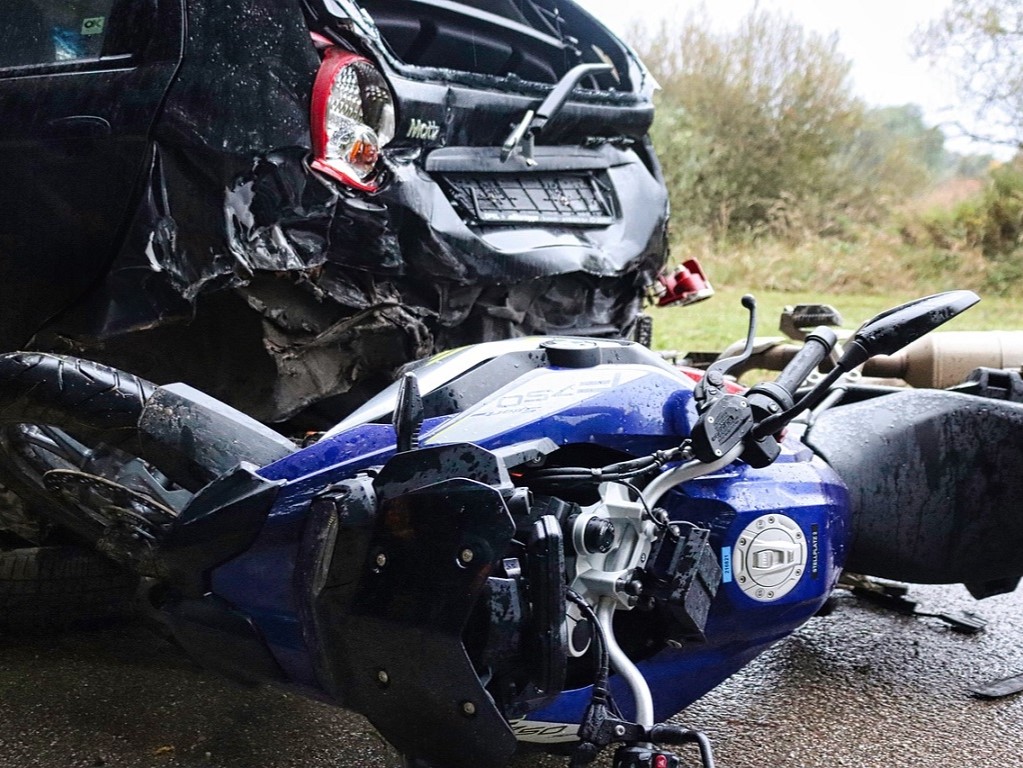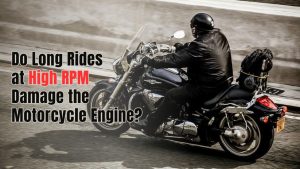KEY POINTS
- Speeding increases accident risks.
- Impairment from alcohol raises risk.
- Aggressive maneuvers cause crashes.
- Inexperience leads to mistakes.
- Not wearing gear ups injuries.
Every day millions of riders go out on the road, riding their favorite sleds. But for some, the ride ends abruptly in a tangle of metal and broken bones. What separates the riders who arrive safely from those who don’t? Beyond luck, a key difference lies in understanding the factors that increase risk and riding accordingly.
We’ll examine the research around higher accident risks, so riders like you can reduce danger and keep the rubber side down.
Disclaimer: This article serves as a source of inspiration and guidance. For personalized advice and expert assistance, always consult with qualified professionals.
What Does the Research Say?
Various studies have identified several factors that can increase a rider’s risk of being involved in an accident or sustaining severe injuries. Understanding these risk factors can help riders make choices to minimize their chances of crashing or suffering serious consequences if an accident does occur.
Moskal 2012 identified that risky riding behaviors have a major impact. Actions like speeding, riding above the speed limit, passing vehicles on the shoulder, and lane splitting are linked to higher accident risk.
Riding for leisure rather than commuting and having a history of previous crashes also indicate greater risk. Alcohol consumption and defying helmet laws are two other major factors, according to Lin 2009.
It’s crucial for riders to understand and address motorcycle safety issues. Motorcycle crashes take a heavy toll, with over 5,932 motorcyclists killed in the U.S. in 2021 alone, according to the National Highway Traffic Safety Administration.
With proper risk awareness, safety-focused decision making, and adherence to safe riding practices, many of these tragic accidents could potentially be avoided. By following our research-backed recommendations, you can lower their risks and ride safer on every journey.
What Are the Major Risk Factors?
Various studies have identified several factors that can increase a rider’s risk of being involved in an accident or sustaining severe injuries. Understanding these risk factors can help riders make choices to minimize their chances of crashing or suffering serious consequences if an accident does occur.
We’ve divided those factors in various sections for easier understanding.
A. Rider behavior
Riders’ behavior on the road is a major contributing factor in motorcycle accidents. Research has identified several high-risk behaviors:
1. Speeding and Violating Speed Limits
Exceeding the speed limit and traveling at speeds too fast for conditions are significant risk factors. Higher speeds mean less time to react to hazards, longer stopping distances, and reduced control of the bike in turns and swerves.
2. Alcohol and Drug Impairment
Riding under the influence of alcohol or drugs greatly diminishes riders’ abilities, slowing reaction times, impairing judgment, and reducing coordination. Even low levels of impairment can make crashes more likely.
3. Aggressive Maneuvers
Riding habits like excessive lane splitting, shoulder passing, and weaving between vehicles contribute to many accidents. These maneuvers disrupt the flow of traffic and make it difficult for other drivers to anticipate a motorcycle’s movements.
B. Rider characteristics
Certain rider characteristics are correlated with higher accident risks:
1. Younger Age
Teen and young adult riders under around age 25 tend to be significantly overrepresented in motorcycle crash statistics. This is due both to lack of experience and riskier riding behaviors common among younger people.
2. Male Gender
Males make up the vast majority of motorcycle riders and have higher accident rates, likely due to greater risk-taking and aggressive behaviors on average.
3. Inexperience and Few Riding Days
Inexperienced riders and those who don’t ride regularly are at higher risk due to lack of skills, comfort, and ability to anticipate hazards that come with substantial mileage.
4. Risk-Seeking Personality
Research has found that motorcyclists in general tend towards higher sensation-seeking and risk-taking personalities. While this attraction draws some to riding, it can also translate into riskier on-bike behaviors and choices.
While individuals have little control over demographic characteristics like age and gender, riders can mitigate accident risks associated with inexperience through structured training courses, taking it easy on early rides, and consciously adopting a more safety-focused mindset when they get on the bike.
C. Riding gear
The equipment riders choose plays an important role in their safety risks.
1. Not Wearing Helmet or Proper Safety Gear
Riding without a helmet or full protective gear greatly increases injury severity and fatality risks in the event of an accident. Even partial protective gear leaves riders vulnerable.
2. Improperly Fitted or Poor Quality Gear
Helmets and protective gear only provide their full benefits if they are the right size, fit securely, and are constructed to appropriate safety standards. Ill-fitting, cheap, or outdated gear offers little real protection.
To mitigate equipment-related risks:
- Wear a helmet meeting current DOT or SNELL standards on every ride.
- Wear full protective gear including jacket, gloves, long pants, and boots.
- Try on gear in person to ensure a proper fit.
- Inspect all gear regularly for damage, tears, or signs of wear.
- Replace helmets, gloves, and protective gear according to manufacturer recommendations.
Investing in high-quality, properly fitted safety equipment represents one of the simplest and most impactful precautions riders can take to minimize injury and death in the event of a crash.
D. Riding purpose
The purpose of a motorcycle trip can also impact safety risks.
1. Higher Risk for Recreational/Leisure Rides vs. Commuting
Research shows that recreational riding carries higher accident risks than commuting. This is likely due to a combination of factors:
- Recreational riders may be more inexperienced and ride less frequently.
- Riders tend to take more risks and ride more aggressively for fun rather than utility.
- Trips taken for pleasure purposes are often longer with more turnarounds and unplanned stops.
RELATED: How Do I Avoid a Blind Spot in a Motorbike’s Rear Mirror?
Mitigation Strategies: How to Avoid Motorcycle Accidents
A. Adopting safer riding habits
The most effective way to lower risks is by modifying one’s own behavior on the bike. We recommend:
1. Obeying Posted Speed Limits
Riding at or below the speed limit at all times is one of the simplest yet most impactful safety precautions a motorcyclist can take. Leave early to avoid rushing and feeling pressured to speed.
2. Refraining from Alcohol and Drugs Before or While Riding
Avoid consuming alcohol or any impairing substances for several hours before riding as well as while operating the motorcycle. Even small amounts of alcohol or drugs can significantly diminish riding abilities.
3. Avoiding Aggressive Maneuvers
Forget about lane splitting, shoulder passing and other risky riding tactics. Instead, ride smoothly and predictably, using turn signals and checking mirrors frequently. Maintain a larger following distance to allow for more reaction time.
Making safer riding habits routine and automatic through repetition and discipline is key. Start with small changes, like always signaling and slowing down at intersections, and build from there. Over time, a more safety-conscious style will become second nature, leading to a lower likelihood of preventable rider-error accidents.
B. Increasing experience and training
Two of the most effective ways to ride more safely are by gaining experience over time and participating in proper motorcycle training courses.
With experience comes familiarity, comfortability, and a more intuitive sense of how to handle different road situations. Over thousands of miles, safe riding habits become ingrained and reactions become faster and more automatic. There is no substitute for the safety benefits of substantial mileage under one’s belt.
However, training can help accelerate the learning process and ensure riders pick up proper techniques from the start.
While experience provides invaluable real-world practice, training fills crucial knowledge gaps, reduces likelihood of ingraining bad habits, and helps riders of all levels optimize their skills and strategies to ride as safely as possible.
Beginner riders should complete a state-approved basics course, while experienced motorcyclists can benefit from advanced skills classes covering panic braking, swerving, and hazard avoidance.
Recommended actions:
- If new to riding, complete the Motorcycle Safety Foundation’s Basic Rider Course
- Continue practicing in empty parking lots to improve basic maneuvers and control
- Enroll in additional skills training as an experienced rider to refresh fundamentals and learn advanced techniques
- Ask more experienced riders for guidance and adopt any tips that improve your skills and confidence
C. Wearing proper safety gear at all times
Consistently wearing a helmet, protective clothing, and full gear is essential for motorcycle safety. Even if a crash cannot be prevented, the right equipment can dramatically reduce the severity of injuries.
We recommend:
- Always wearing a full-face helmet meeting current DOT or SNELL standards. Open-face helmets offer limited protection.
- Wearing protective motorcycle-specific clothing on every ride, including a leather or reinforced textile jacket, pants, gloves, and full-coverage boots.
- Ensuring all gear fits properly and is in good condition. Replace items as needed according to manufacturer recommendations.
- Upgrading to the highest levels of safety gear that are within your means, such as armored jackets, pants and gloves. Advanced protective clothing can minimize road rash and soft tissue damage in a crash.
- Adding extra protective layers for comfort during longer or colder rides while still prioritizing impact-resistant gear.
By following a strict “gear up every time” rule without exception, riders condition themselves to treat full safety equipment as an indispensable part of riding because it truly is.
RELATED: How Do I Know If a Motorcycle Jacket Is CE Certified?
D. Avoiding unnecessary risks especially on non-essential rides
In addition to adopting safer riding habits and utilizing proper equipment, motorcyclists can lower their risk of accidents by simply avoiding unnecessary risks wherever possible.
We recommend:
- Only riding when it is absolutely essential, and taking alternative transport when feasible. Fewer miles ridden translates to fewer opportunities for crashes.
- Being especially conservative and risk-averse on recreational rides versus commuting trips. Non-essential riding carries additional risks that should be minimized.
- Not attempting any maneuvers, stunts or “tricks” that push the limits of your skill or comfort levels. Only ride within – or slightly below – your demonstrated abilities.
- Avoiding riding in hazardous conditions like heavy traffic, rush hour, inclement weather, or at night if illumination is poor.
- Leaving a comfortable buffer of spare time when traveling to eliminate feeling pressured to speed or ride aggressively in a time crunch.
- Generally erring on the side of caution and conservatism while on the bike. If a situation feels even slightly risky, avoid it if possible.
Conclusion
While motorcycling will always possess an element of risk, following the recommendations in this article can significantly reduce your chances of being involved in an accident. From observing basic traffic laws to investing in quality safety gear and focusing on defensive riding techniques, making small adjustments to your behavior can make a big difference in your safety on two wheels.
If you found this content useful, be sure to explore more articles on our site for advanced tips, gear reviews to improve your protective equipment, and advice from experienced riders for making the most of both short trips and long tours.
FAQs about Factors for Increasing Risk of Motorcycle Accidents
What are the main causes of motorcycle accidents?
Speeding, driver impairment from alcohol/drugs, reckless maneuvers, rider inexperience, and not wearing proper safety gear.
How can I reduce my risk of a motorcycle crash?
Ride at safe speeds, avoid alcohol, practice defensive riding, complete training courses, wear full protective gear, and gain experience.
Do newer riders have more motorcycle accidents?
Yes, inexperienced riders and those with less riding time have higher accident rates due to lack of skills and familiarity with road hazards.
Does not wearing a helmet increase crash risks?
Yes, riders who don’t wear helmets have higher fatality rates because helmets prevent head injuries which cause most motorcycle deaths.
Can anti-lock brakes lower my chances of crashing?
Anti-lock brakes may help riders maintain control during hard braking but do not guarantee avoiding accidents which are usually due to human factors.
Do leather jackets offer more protection than textile in crashes?
While leather is more abrasion-resistant, both leather and high-quality textile jackets with armor, if fitted properly, can provide good impact and abrasion protection.
Does riding a sportbike increase my crash risk?
While all motorcycles pose risks, sportbikes may encourage faster, less stable riding due to their focus on performance. Rider behavior is a more critical factor than bike type.
Is night riding significantly more dangerous?
Yes, reduced visibility, fatigue, impaired vision from oncoming headlights, and difficulty seeing road hazards increase nighttime accident risk.
Do you have a higher chance of dying in a motorcycle crash vs a car crash?
Yes, motorcyclists are about 28 times more likely to die in a crash per vehicle mile traveled than car drivers due to lack of a cage-like structure and exposure to road hazards.
Does riding with a group increase or decrease your safety?
Riding in a group can improve safety through increased visibility but also threatens safety if group members encourage speeding, reckless behavior or become distracted.
Does lane splitting/filtering reduce or increase motorcycle crash risk?
While lane splitting may reduce rear-end collisions in traffic, it increases risks of side-swipe and lane-change collisions due to higher speeds and complex traffic interactions.
Do cruise controls make motorcycles more or less safe?
Cruise controls can promote a more relaxed right wrist but do not account for changing road conditions, so riders must still actively monitor speed and traffic to adjust as needed.
Does ABS reduce crash risk more than airbags for motorcyclists?
ABS reduces crash risk more significantly by helping riders maintain control during hard braking, while airbags only mitigate injury severity after a collision has already occurred.
Do expensive motorcycles have lower crash rates than cheaper bikes?
There is no evidence expensive motorcycles are safer when operated by the same riders, though they may come with more advanced safety features.
How do older motorcyclists reduce their higher risk of crashing?
Older riders can take refresher courses, ride within their abilities, avoid night riding, dress conspicuously, and choose lower-powered motorcycles to compensate for reduced reaction times and abilities.




